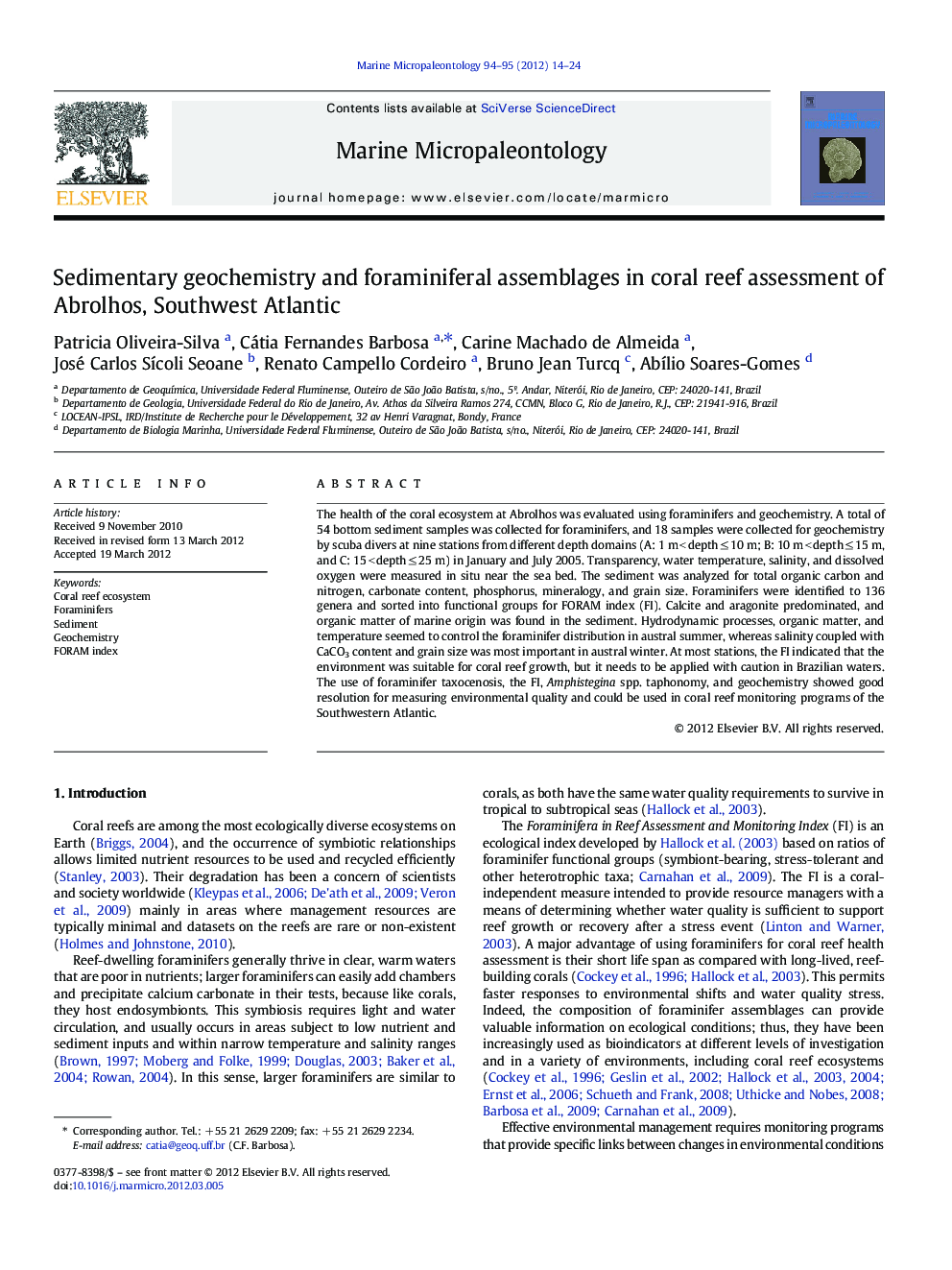| Article ID | Journal | Published Year | Pages | File Type |
|---|---|---|---|---|
| 4748940 | Marine Micropaleontology | 2012 | 11 Pages |
The health of the coral ecosystem at Abrolhos was evaluated using foraminifers and geochemistry. A total of 54 bottom sediment samples was collected for foraminifers, and 18 samples were collected for geochemistry by scuba divers at nine stations from different depth domains (A: 1 m < depth ≤ 10 m; B: 10 m < depth ≤ 15 m, and C: 15 < depth ≤ 25 m) in January and July 2005. Transparency, water temperature, salinity, and dissolved oxygen were measured in situ near the sea bed. The sediment was analyzed for total organic carbon and nitrogen, carbonate content, phosphorus, mineralogy, and grain size. Foraminifers were identified to 136 genera and sorted into functional groups for FORAM index (FI). Calcite and aragonite predominated, and organic matter of marine origin was found in the sediment. Hydrodynamic processes, organic matter, and temperature seemed to control the foraminifer distribution in austral summer, whereas salinity coupled with CaCO3 content and grain size was most important in austral winter. At most stations, the FI indicated that the environment was suitable for coral reef growth, but it needs to be applied with caution in Brazilian waters. The use of foraminifer taxocenosis, the FI, Amphistegina spp. taphonomy, and geochemistry showed good resolution for measuring environmental quality and could be used in coral reef monitoring programs of the Southwestern Atlantic.
► Understanding the sedimentological and geochemical factors influencing foraminifer distribution in a unique reef environment. ► Applying the FORAM Index of Hallock et al. in Abrolhos, Southwestern Atlantic, thus increasing the number of reef environments tested by this method. ► Southwestern Atlantic local hydrodynamics influencing foraminifera distribution in Abrolhos.
